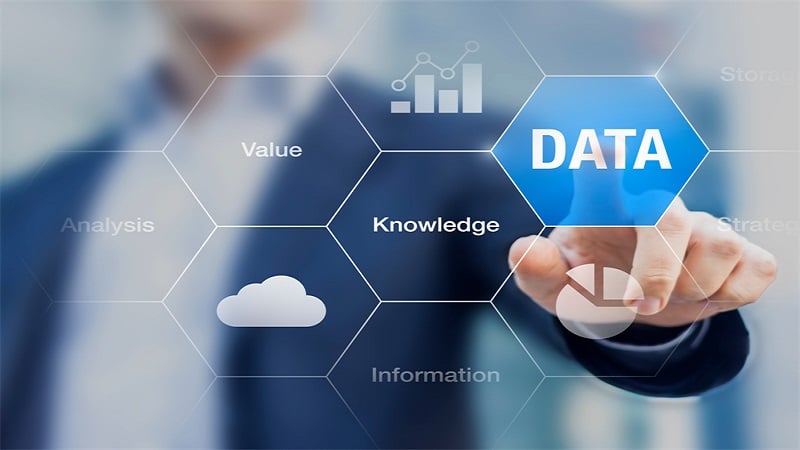
How do banks secure our financial data & healthcare providers our patient records, when they're accessed online? Read about enterprise mobility management here.
In the digital age, mobility is paramount for business success. Employees need access to corporate resources from various devices and locations to collaborate efficiently and serve customers effectively.
However, this increased mobility introduces new security, compliance, and management challenges. Enterprise mobility management (EMM) serves as the cornerstone for addressing these challenges, ensuring that organizations can harness the benefits of mobility without compromising their integrity.
Understanding Enterprise Mobility Management

EMM, in its essence, is the set of strategies, policies, and tools meticulously crafted to oversee and safeguard the vast landscape of mobile devices, applications, and data within an organization, including the integration and monitoring of International Mobile Equipment Identity numbers, whose acronym is an actual EMM firm, IMEI.
EMM is a compelling necessity in the contemporary business ecosystem, where the smooth exchange of information and connectivity holds utmost importance.
Key Components Of Enterprise Mobility Management
Within the intricate framework of EMM, several key components converge to ensure mobile technology's seamless and secure operation within organizations.
1. Mobile Device Management (MDM)
MDM is the first pillar of EMM, focusing on managing mobile devices within an organization. It involves device deployment, remote configuration, and enforcing security policies. MDM ensures that all devices comply with the organization's standards and are protected against threats.
2. Mobile Application Management
MAM goes hand in hand with MDM, addressing the challenges related to mobile applications. It encompasses distributing, updating, and removing apps on employees' devices. MAM also allows organizations to control app permissions, ensuring that sensitive data remains protected.
3. Mobile Content Management
MCM is all about safeguarding sensitive data on electronic devices. It provides secure access to corporate documents, encrypts data, and enables remote wiping of lost or compromised devices. MCM ensures that sensitive information remains confidential even when accessed on mobile devices.
4. Identity and Access Management
IAM plays a pivotal role in EMM by authenticating and authorizing users. It makes sure only authenticated individuals can gain access to company assets from electronic devices. Multifactor authentication and single logins are common IAM strategies to enhance security.
5. Mobile Threat Defense (MTD)
Because of the ever advancing of mobile threats, MTD solutions have become indispensable. These tools identify and mitigate mobile-specific risks like malware, phishing, and network vulnerabilities. MTD ensures that mobile devices remain a safe conduit for business operations.
6. Security and Compliance Policies
Setting and enforcing security and compliance policies are vital aspects of EMM. These policies dictate how devices should be configured, which apps can be installed, and what data can be accessed. Regular audits and updates are necessary to adapt to changing security threats and regulations.
Challenges In Enterprise Mobility Management
Navigating the EMM landscape has its challenges. Here are some common hurdles faced by businesses in EMM:
- Device Diversity. The proliferation of mobile devices and operating systems poses a significant challenge. Organizations must ensure their EMM strategy accommodates various platforms while maintaining consistent security measures.
- Privacy Concerns. Balancing the need for security with respect for employees' privacy can be tricky. Implementing EMM solutions that respect personal data boundaries is essential to maintain trust.
- User Experience. Effective EMM should not hinder employees' productivity or create unnecessary barriers. Striking the right balance between security and user-friendliness is crucial.
- Compliance Complexity. Compliance requirements continually evolve, and organizations must stay updated with regulations such as GDPR and HIPAA. Non-compliance can result in severe consequences, including hefty fines.
- Cost Management Implementation. EMM solutions can be expensive, from software licenses to ongoing maintenance costs. Organizations must carefully evaluate their needs and budget constraints to find a cost-effective solution.
Overcoming these challenges in EMM demands a meticulous approach, but with the right strategies and solutions, organizations can harness the benefits of mobility while mitigating potential pitfalls.
Best Practices For Successful Enterprise Mobility Management

To navigate the complex world of EMM successfully, organizations should adopt these best practices:
- Start with a Clear Strategy. Begin by defining your organization's goals and objectives for EMM. Tailor your strategy to meet your specific needs and ensure it aligns with your business objectives.
- Conduct a Risk Assessment. Identify potential threats and vulnerabilities specific to your organization. This assessment will help you prioritize security measures and allocate resources accordingly.
- Engage Employees. Incorporate employees into your EMM strategy. Provide training and education to ensure they understand the importance of adhering to security policies and practices.
- Choose the Right EMM Solution. Select an EMM solution that aligns with your organization's needs and budget. Consider scalability, ease of use, and integration capabilities when choosing.
- Regularly Update Policies. As the threat landscape evolves, so should your security policies. Regularly review and update your policies to address new risks and compliance requirements.
- Monitor and Audit. Implement continuous monitoring and auditing of your EMM environment to promptly detect and respond to security incidents. Regular audits help identify areas for improvement.
By embracing these best practices, organizations can fortify their EMM efforts, fostering a secure, productive, and adaptable mobile environment that aligns with their overarching business objectives.
Conclusion
Enterprise mobility management is no longer an optional consideration for modern businesses. It is a fundamental necessity in an era where mobile devices and remote work are pervasive. By understanding the key components, challenges, and best practices of EMM, organizations can confidently navigate this complex landscape.
A well-implemented EMM strategy not only enhances security but also empowers employees to work flexibly and efficiently, ultimately contributing to the success and growth of the organization.










